
Intensive pig farming, also known as pig factory farming, is the primary method of pig production, in which grower pigs are housed indoors in group-housing or straw-lined sheds, whilst pregnant sows are housed in gestation crates or pens and give birth in farrowing crates.

The Weimaraner is a large dog that was originally bred as a hunting dog in the early 19th century. Early Weimaraners were used by royalty for hunting large game such as boar, bear, and deer. As the popularity of hunting large game began to decline, Weimaraners were used for hunting smaller animals like fowl, rabbits, and foxes.

Nail biting, also known as onychophagy or onychophagia, is an oral compulsive habit of biting one's fingernails. It is sometimes described as a parafunctional activity, the common use of the mouth for an activity other than speaking, eating, or drinking.
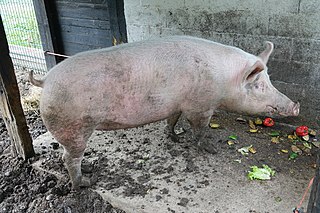
The pig, also called swine or hog, is an omnivorous, domesticated, even-toed, hoofed mammal. It is named the domestic pig when distinguishing it from other members of the genus Sus. It is considered a subspecies of Sus scrofa by some authorities, but as a distinct species by others. Pigs were domesticated in the Neolithic, both in East Asia and in the Near East. When domesticated pigs arrived in Europe, they extensively interbred with wild boar but retained their domesticated features.
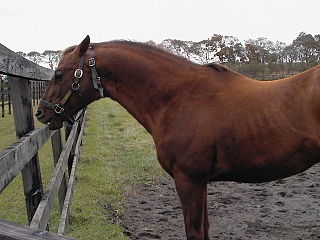
Cribbing is a form of stereotypy, otherwise known as wind sucking or crib-biting. Cribbing is considered to be an abnormal, compulsive behavior seen in some horses, and is often labelled a stable vice. The major factors that cause cribbing include stress, stable management, genetic and gastrointestinal irritability.
Autophagia refers to the practice of biting/consuming one's body. It is a sub category of self-injurious behavior (SIB). Commonly, it manifests in humans as nail biting and hair pulling. In rarer circumstances, it manifests as serious self mutilative behavior such as biting off one's fingers. Autophagia affects both humans and non humans. Human autophagia typically occurs in parts of the body that are sensitive to pain, such as fingers. Human autophagia is not motivated by suicidal intent, but may be related to the desire to seek pain.

A chew toy is an object designed to be chewed on by animals for stimulation and relief from boredom or discomfort. Chew toys can help relieve pain associated with teething, which is especially true for younger animals, such as puppies. There are several types of chew toys made from different materials, including rawhide, wood, paper, and mineral. Chew toys are commonly associated with dogs, but have also been effective with birds, rodents, and rabbits. Some parents give human infants a similar toy called a teether to help soothe inflamed gums during teething.
Docking is the intentional removal of part of an animal's tail or, sometimes, ears. The term cropping is more commonly used in reference to the cropping of ears, while docking more commonly—but not exclusively—refers to the tail; the term tailing is used, also. The term has its origins in the living flesh of the tail, commonly known as the dock, from which the animal's tail hairs grow.
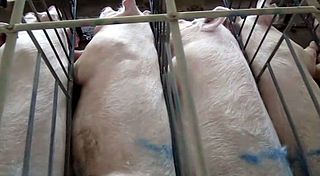
A gestation crate, also known as a sow stall, is a metal enclosure in which a farmed sow used for breeding may be kept during pregnancy. A standard crate measures 6.6 ft x 2.0 ft.
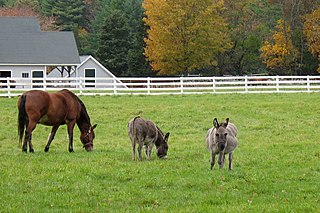
Stable vices are stereotypies of equines, especially horses. They are usually undesirable habits that often develop as a result of being confined in a stable with boredom, hunger, isolation, excess energy, or insufficient exercise. They present a management issue, not only leading to facility damage from chewing, kicking, and repetitive motion, but also leading to health consequences for the animal if not addressed. They also raise animal welfare concerns.

Dermatophagia or dermatodaxia is a compulsion disorder of gnawing or biting one's own skin, most commonly at the fingers. This action can either be conscious or unconscious and it is considered to be a type of pica. Those affected with dermatophagia typically bite the skin around the nails, leading to bleeding and discoloration over time. Some people also bite on their skin on their finger knuckles which can lead to pain and bleeding just by moving their fingers. In herpetology, dermatophagia is used to correctly describe the act in which amphibians and reptiles eat the skin they shed, but this is not what occurs in humans. Those diagnosed with this disorder do not develop wounds on the bitten areas of their hands or lose any skin. Instead, they experience a thickening of the skin being repeatedly bitten. Contemporary research suggests a link between impulse-control disorders and obsessive–compulsive disorders, and this was addressed in the DSM-5 when dermatophagia and other related disorders were classified as 'other specified obsessive-compulsive related disorders' and are given the specification of body focused repetitive behavior.
Animal psychopathology is the study of mental or behavioral disorders in non-human animals.

Pig farming or pork farming or hog farming is the raising and breeding of domestic pigs as livestock, and is a branch of animal husbandry. Pigs are farmed principally for food and skins.
Morsicatio buccarum is a condition characterized by chronic irritation or injury to the buccal mucosa, caused by repetitive chewing, biting or nibbling.
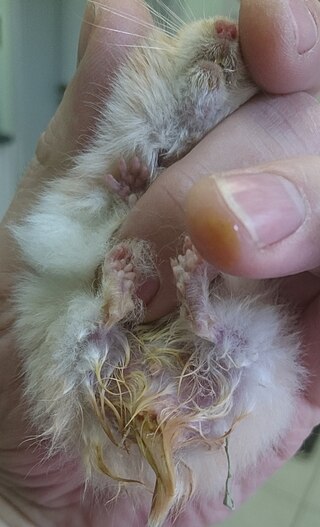
Wet-bottom or proliferative ileitis, is a disease of hamsters. It is precipitated by stress. Even with treatment, the animal can die within 48–72 hours. Baby hamsters are much more likely to get the disease than older hamsters. It is commonly found when the hamster is being weaned at about four weeks of age.
Risk assessment for organic swine health is the process of evaluating the likelihood and potential impact of various factors that may affect the health and well-being of organic swine. Risks associated with organic swine farming may differ to those associated with non-organic swine farming, and is of increasing relevance due to growth in the sector. While organic swine farming makes up a small share of U.S. swine farming overall, numbers have increased significantly in recent years. Additionally, non-certified organic swine herds are not accounted in official statistics. Consumer demand, stemming from the larger organic agriculture movement has helped spur growth in this industry.
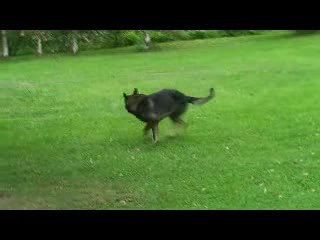
Tail chasing is a behaviour exhibited in dogs that is characterized by spinning in tight circles in either direction, and can be slow and focused on the tail or fast and unfocused. It is a compulsion similar to those seen in humans suffering from OCD and it can be quite disruptive to the lives of the dogs themselves, as well as their owners. Some causes have been suggested, including genetic factors, and environmental factors that vary depending on the individual dog. Furthermore, treatment options include drugs that decrease the frequency of tail chasing by targeting the underlying mechanisms, and behavioural changes regulated by the dog's owners.

Biting is a common zoological behavior involving the active, rapid closing of the jaw around an object. This behavior is found in toothed animals such as mammals, reptiles, amphibians and fish, but can also exist in arthropods. Myocytic contraction of the muscles of mastication is responsible for generating the force that initiates the preparatory jaw abduction (opening), then rapidly adducts (closes) the jaw and moves the top and bottom teeth towards each other, resulting in the forceful action of a bite.
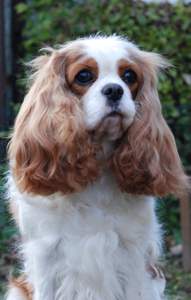
Fly biting refers to a type of dog behavior: episodes of intentional focused biting at the air, as if the dog is biting at imaginary flies. Cavalier King Charles Spaniels appear to be predisposed to fly catching syndrome, though it has been documented in many different breeds and mixes. Age of onset is varied.














